PDF chapter test TRY NOW
The four whorls:
Calyx and corolla are the two outermost whorls of a flower. As they do not directly take part in reproduction, they are also known as non-essential or accessory whorls.
As androecium (stamen) and gynoecium (carpel) take part directly in reproduction, they are known as essential whorls.
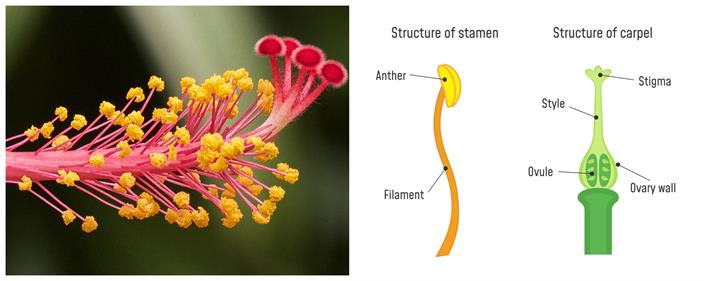
Androecium and gynoecium
Androecium:
It is the male part of the flower that is composed of stamens. Each stamen is made up of a filament and a small pouch-like structure at the tip called the anther.
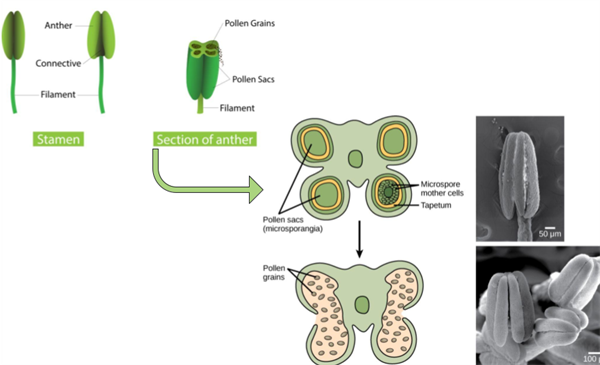
Structure of stamen
The pollen grains are formed in the pollen sac's anther.
Pollen grain:
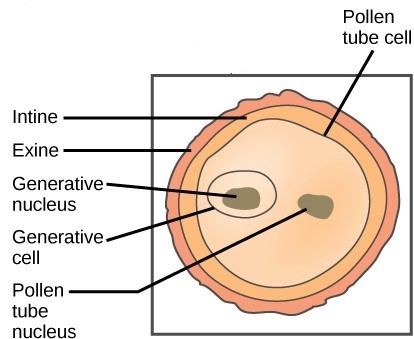
Structure of a pollen grain
Pollen grains are typically spherical in shape. They have a two layered wall. Exine is the hard outermost layer. It has germpores, which are large openings. Intine refers to the thin inner layer. It's a cellulose and pectin-based thin and continuous layer. The vegetative and reproductive cells are the two cells found in mature pollen grains. The nucleus of a vegetative cell is a large one. The generative cell splits into two male gametes during mitosis.
Gynoecium:
The female part of the flower which is made up of carpels is known as gynoecium.
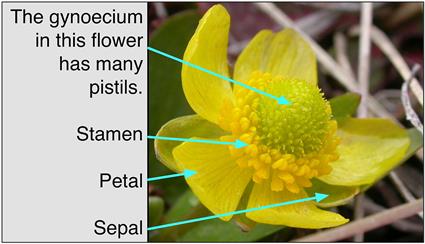
Gynoecium
It consists of three parts:
- Ovary
- Style
- Stigma
The ovary is a structure in which ovules are present.
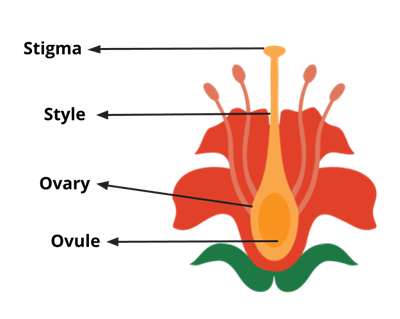
Structure of gynoecium
Reference:
https://www.flickr.com/photos/rayinmanila/20561557586
https://upload.wikimedia.org/wikipedia/commons/a/a2/Figure_32_01_06f.jpg
https://upload.wikimedia.org/wikipedia/commons/thumb/b/b8/Gynoecium_diagram_for_Simple_wikipedia.jpg/1024px-Gynoecium_diagram_for_Simple_wikipedia.jpg
https://upload.wikimedia.org/wikipedia/commons/1/1d/Figure_32_01_05.jpg
https://upload.wikimedia.org/wikipedia/commons/thumb/6/6e/ABC_Model.svg/512px-ABC_Model.svg.png
